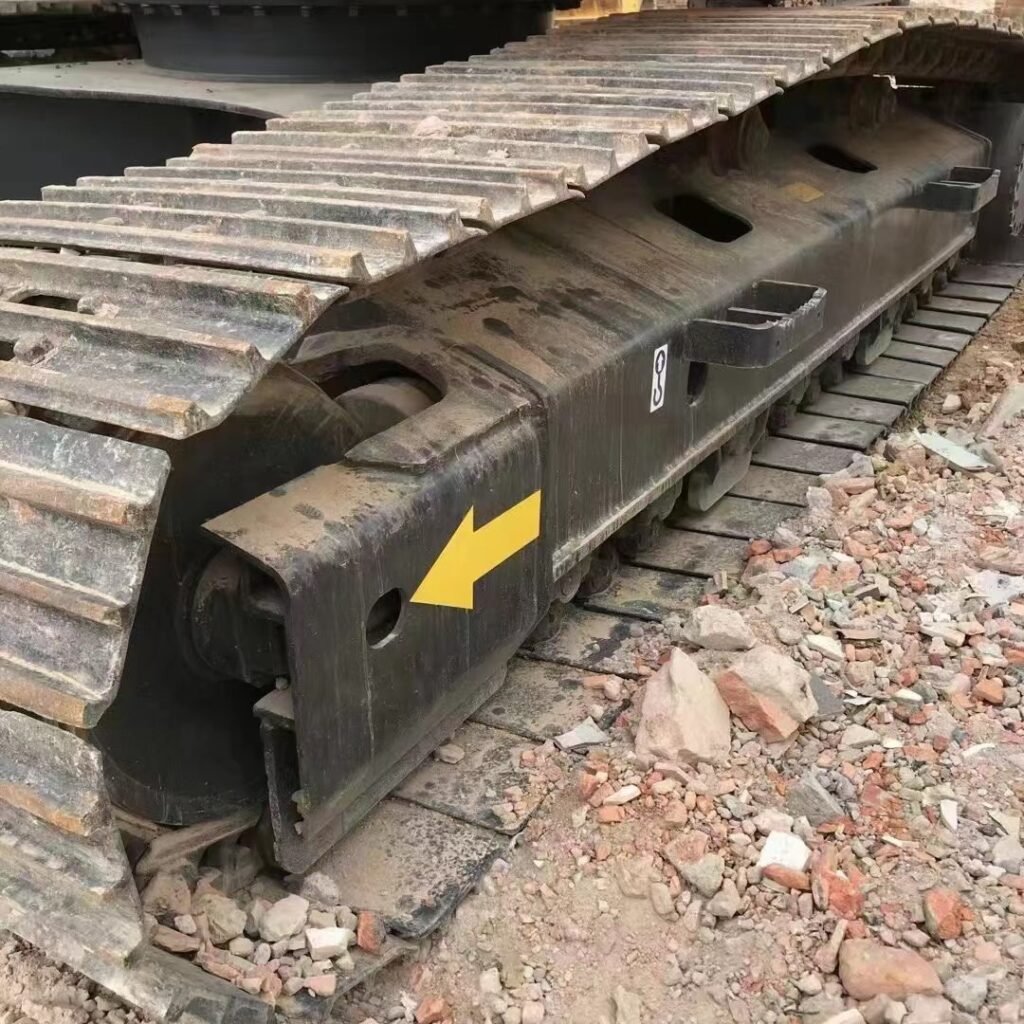I. Introduction
- Background: Tracks and sprockets are critical components of excavators that directly affect the machine’s mobility and stability. Used excavators are becoming increasingly popular in the market, but their performance can be influenced by usage history and maintenance conditions. Therefore, conducting a thorough inspection before purchase is essential.
- Purpose and Significance: This guide aims to provide users with detailed inspection methods to assess the condition of tracks and sprockets on used excavators. Through systematic checks, users can evaluate the equipment’s value and potential risks, aiding in their purchasing or operational decisions.
II. Overview of the Track System
1. Function and Importance of Tracks
- Function Introduction: Tracks are the primary locomotion component of excavators, responsible for converting the machine’s power into movement and ensuring stability on various terrains.
- Importance Analysis: The condition of the tracks significantly impacts the efficiency of the excavator, as well as safety and equipment lifespan. Severely worn tracks can lead to instability, increasing the risk of accidents.
2. Key Components
- Drive Sprocket: The drive sprocket is the core component of the track system, responsible for transmitting engine power to the tracks. Inspecting wear levels is critical for assessing the equipment’s driving performance.
- Idler Wheel: The idler wheel ensures the tracks remain stable during movement, preventing derailment or misalignment. Regular inspection of wear is essential to avoid safety hazards.
- Support Roller: The support roller bears the weight of the tracks, maintaining the balance of the equipment. Inspecting for deformation can help assess its impact on overall stability.
- Carrier Roller: The carrier roller maintains the tension of the tracks, ensuring stability during operation. Overly worn carrier rollers can lead to slack in the tracks, affecting performance.

III. Inspection Methods
1. Visual Inspection
- Overall Observation: Start with a visual inspection of the tracks and sprockets, looking for visible damage, cracks, or deformation. Any adverse signs could indicate a decline in equipment performance.
- Wear Condition: Pay special attention to the extent of wear on each component, particularly the contact surfaces of the drive sprocket and the bottom of the tracks, ensuring there are no severely worn parts.
2. Drive Sprocket Inspection
- Inspection Method: Carefully examine the tooth shape and contact surface of the drive sprocket, checking for obvious wear, missing teeth, or damage. Rotate the drive sprocket manually to ensure smooth operation.
- Impact Factors: Analyze how wear on the drive sprocket affects the overall driving performance of the machine. Severe wear can impede power transmission, reducing operational efficiency.
3. Idler Wheel Inspection
- Inspection Method: Check the idler wheel’s rotation to ensure it moves smoothly without any binding. Smooth rotation of the idler wheel is crucial for maintaining track stability during operation.
- Wear Assessment: Evaluate the wear level of the idler wheel; excessive wear could lead to track misalignment, compromising overall safety.
4. Support Roller Inspection
- Inspection Method: Observe the appearance of the support roller and check its rotation to ensure there are no unusual noises or significant wear. Proper operation of the support roller is vital for maintaining equipment balance.
- Deformation Check: Confirm whether the support roller shows any signs of deformation. Deformation can affect the contact area of the tracks, leading to uneven wear and instability.
5. Carrier Roller Inspection
- Inspection Method: Observe the tension on the carrier roller to confirm it maintains the appropriate track tension, preventing the tracks from becoming slack or overly tight.
- Wear Assessment: Check the wear level of the carrier roller to ensure it is not excessively worn. If the carrier roller is significantly worn, it may not effectively maintain track tension.
6. Track Inspection
- Inspection Method: Assess the overall condition of the tracks, looking for cracks, detachments, or severe wear. The integrity of the tracks directly affects the machine’s mobility.
- Chain Inspection: Evaluate the wear condition of the chain, confirming there are no breaks or slack. The health of the chain is crucial for the stability of the tracks and the safety of the equipment.
IV. Summary and Recommendations
- Key Findings: Summarize the importance of inspecting tracks and sprockets, highlighting how wear on various components affects equipment performance. Regular inspections can significantly reduce the likelihood of failures, ensuring safe and efficient operation.
- Practical Suggestions: Offer maintenance and care recommendations, including:
- Regular Inspections: Advise establishing a routine inspection schedule to ensure the good condition of tracks and sprockets.
- Professional Maintenance: For significant issues found during inspections, recommend seeking professional assistance promptly to ensure the equipment’s safety and reliability.
- Status Tracking: Maintain detailed records of maintenance and inspections to help monitor the equipment’s condition, facilitating future management and maintenance decisions.



